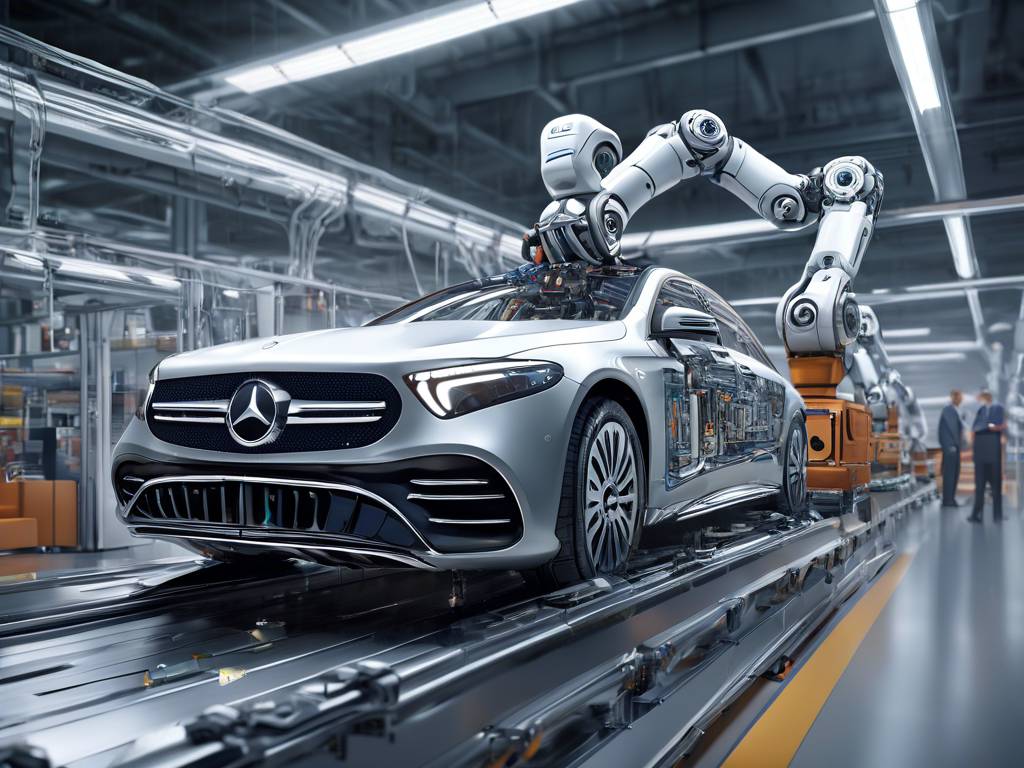Mercedes-Benz Partners with Apptronik to Introduce AI Robots in Factories
German car manufacturer Mercedes-Benz has joined forces with AI developer Apptronik to incorporate artificial intelligence into its factory robots. The collaboration marks Apptronik’s first commercial contract to deploy its Apollo robots in the real world and the automotive industry. Apollo, a humanoid robot developed by Apptronik, stands at nearly six feet tall and weighs 160 lbs. It can lift up to 55 lbs, has a four-hour battery life, and features LED lights in its head and chest for communication purposes.
Automating Low-Skill, Physically Challenging Labor
Mercedes-Benz plans to utilize the Apollo robot to automate physically demanding, repetitive tasks that require low-skill labor. This use case serves as a model for other organizations to follow in the future. By employing humanoid robots in their factories, companies like Mercedes-Benz can optimize existing human-designed environments without the need for significant redesigns.
Potential Impact on Human Workers
The increasing integration of AI into various sectors has raised concerns among policymakers and ethicists about the potential displacement of human workers. Whether in knowledge-based fields or trades, there is apprehension that AI could lead to job losses or reduced investment in human resources. Mercedes-Benz views its partnership with Apptronik as a pilot program to assess the impact of robotics on their skilled workforce in manufacturing. The company aims to explore new possibilities while understanding both the potential benefits and challenges.
The Rise of Humanoid Robots in Workplaces
As artificial intelligence continues to advance rapidly, there is a growing focus on humanoid robots powered by AI technology. While generative AI models have received much attention, humanoid robots are quickly emerging as key players. Despite skepticism surrounding their practicality, several factors can determine the suitability of humanoid robots in specific environments. For example, the choice between wheels and legs depends on factors such as terrain and obstacles.
Developments in Mass Production Robots
Many companies, including Hanson Robotics, Tesla, OpenAI-backed 1X, and Honda, are actively developing robots for mass production that can operate in hazardous environments. These robots are designed to perform tasks in space exploration and other extreme conditions. Figure AI, a Silicon Valley-based company, recently unveiled its Figure 01 robot, which utilizes OpenAI’s technology to engage in conversations, identify objects, and clean spaces simultaneously.
Hot Take: Balancing AI and Human Workers
The partnership between Mercedes-Benz and Apptronik demonstrates the increasing adoption of AI technology in industrial settings. By incorporating AI into their factory robots, Mercedes-Benz aims to optimize efficiency while supporting their skilled workforce. However, concerns about job displacement and reduced investment in human resources persist as AI continues to disrupt various sectors.
As AI technology evolves and becomes more integrated into workplaces, it is crucial to strike a balance between automation and human labor. The key lies in identifying tasks that can be effectively performed by robots while ensuring that human workers are equipped with the skills necessary for jobs that require creativity, critical thinking, and emotional intelligence.
The future of work will likely involve a collaborative approach where humans and robots work side by side to maximize productivity. With ongoing advancements in AI technology and robotics, it is essential for policymakers, ethicists, and industry leaders to address the potential impact on the workforce while harnessing the benefits offered by automation.
Demian Crypter emerges as a true luminary in the cosmos of crypto analysis, research, and editorial prowess. With the precision of a watchmaker, Demian navigates the intricate mechanics of digital currencies, resonating harmoniously with curious minds across the spectrum. His innate ability to decode the most complex enigmas within the crypto tapestry seamlessly intertwines with his editorial artistry, transforming complexity into an eloquent symphony of understanding.

